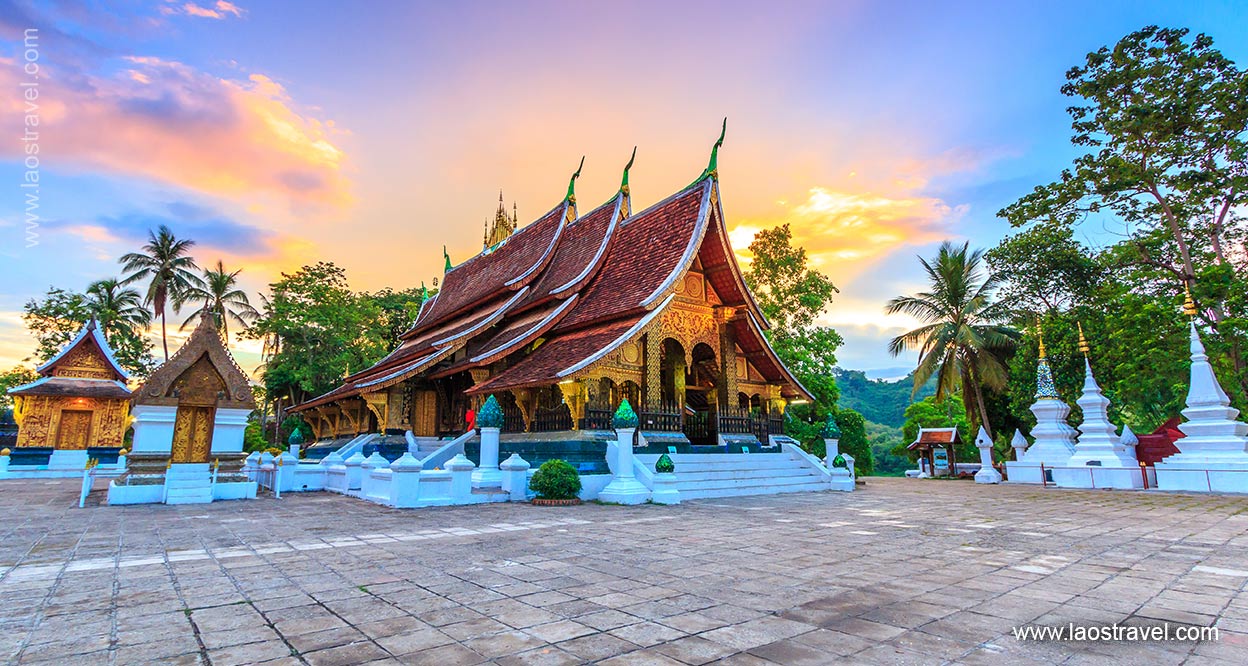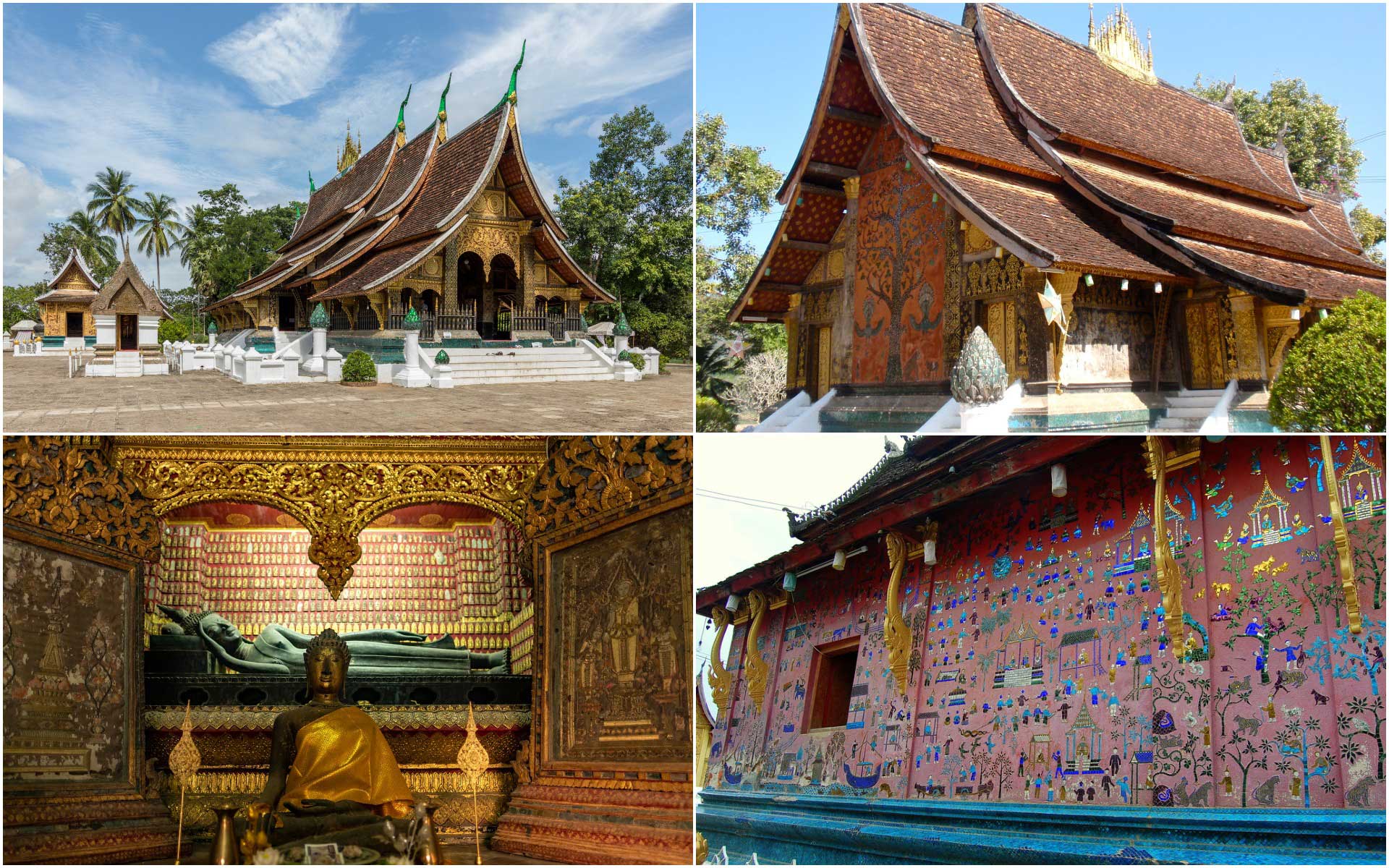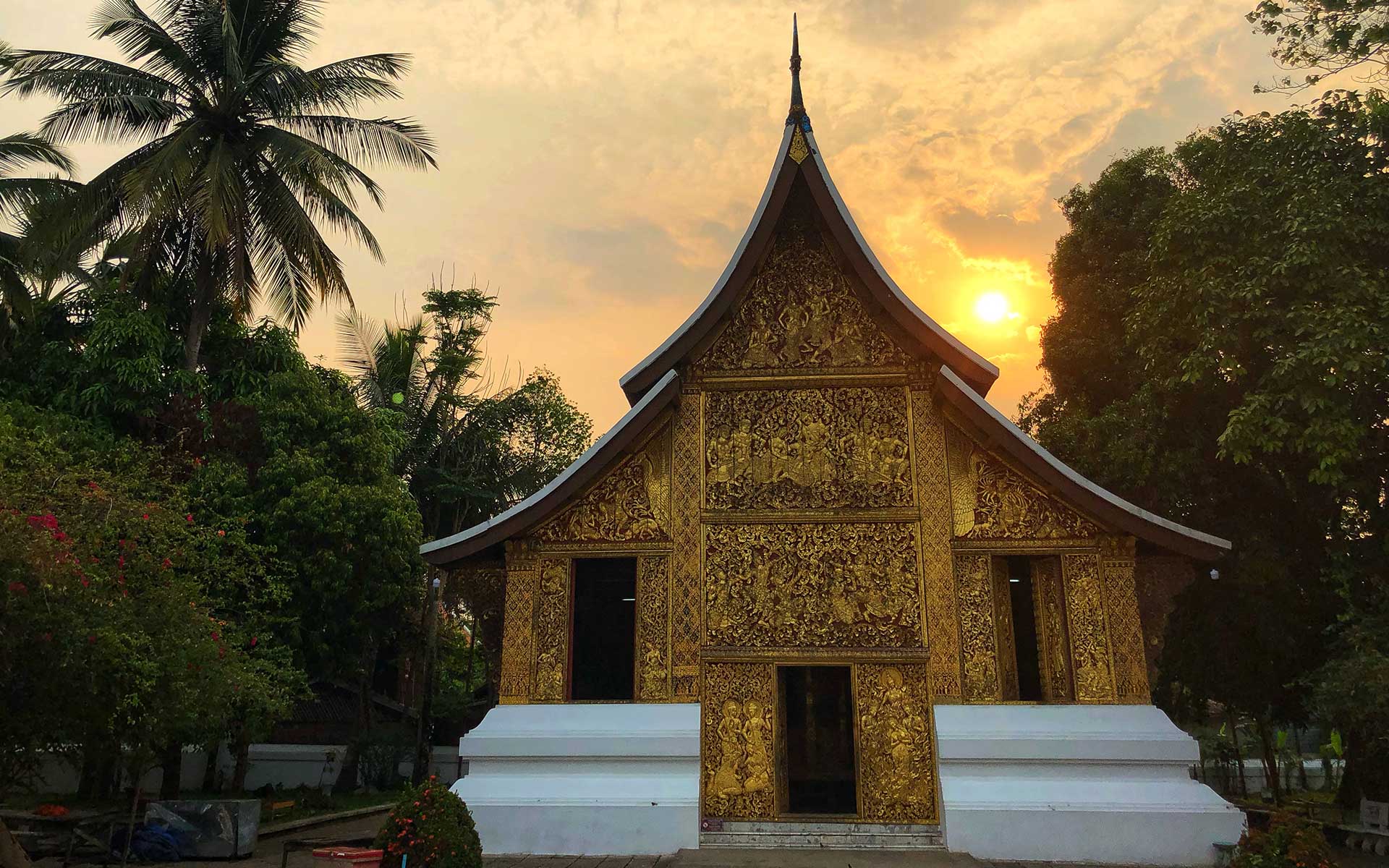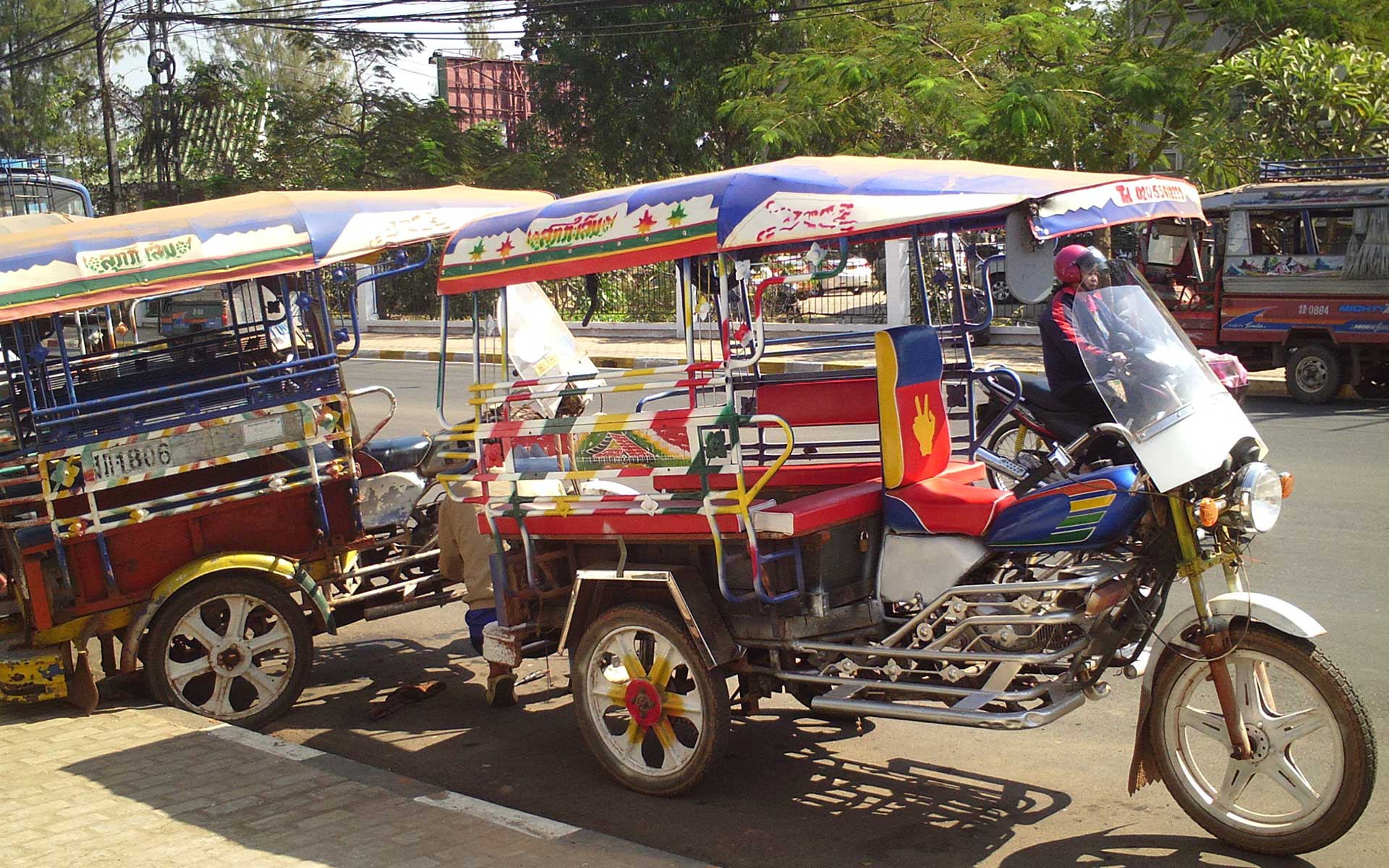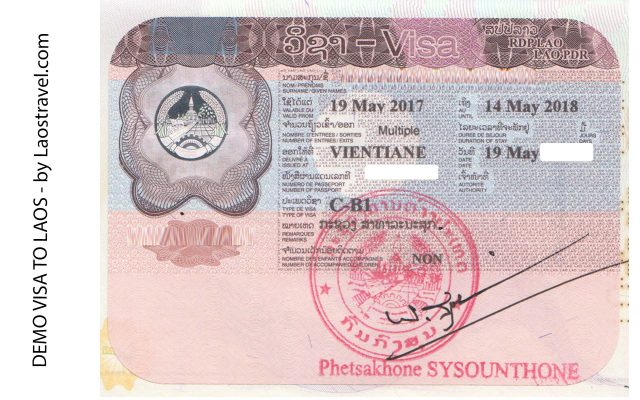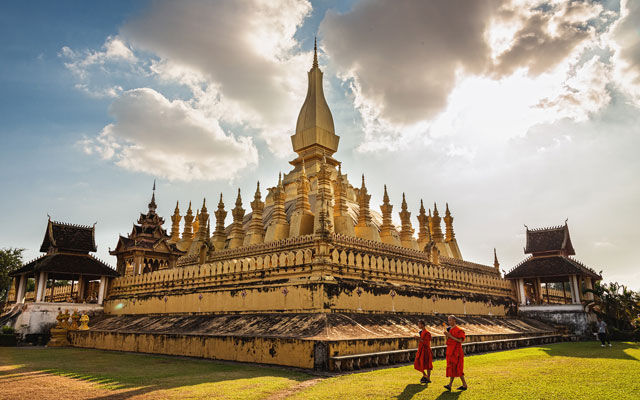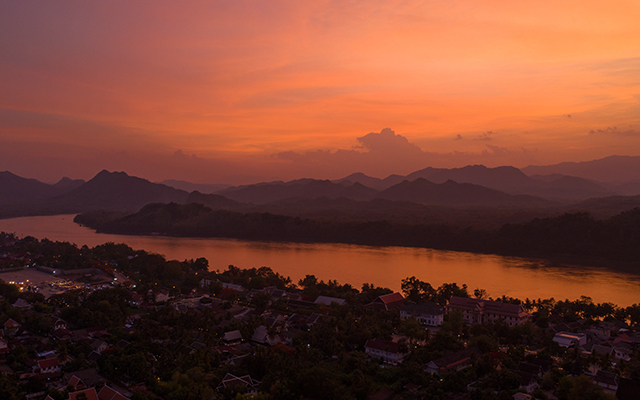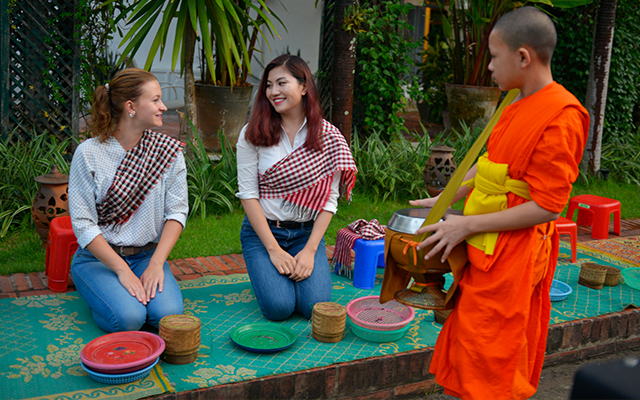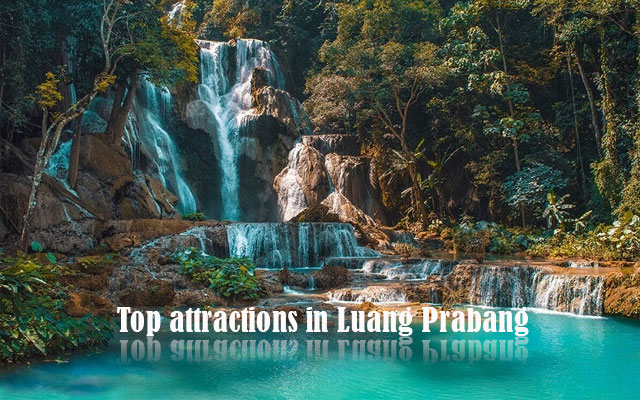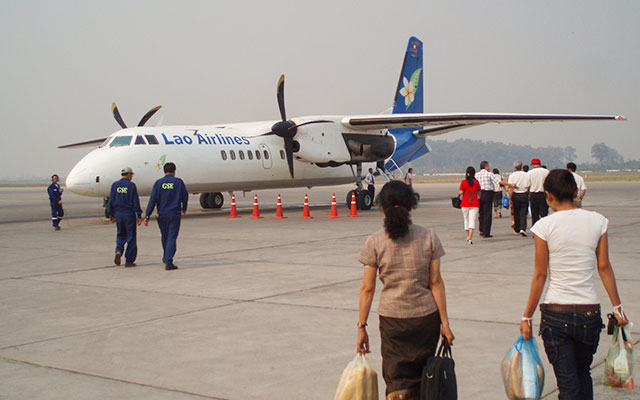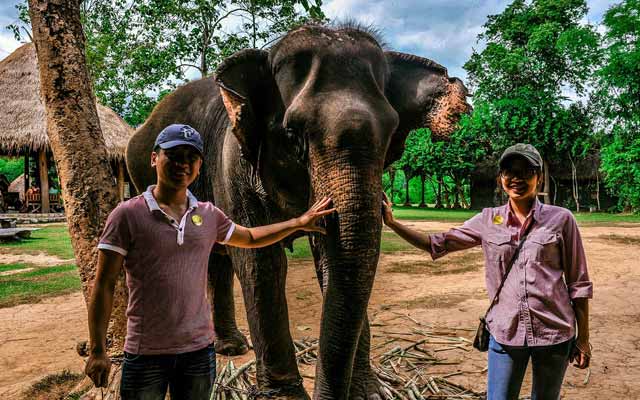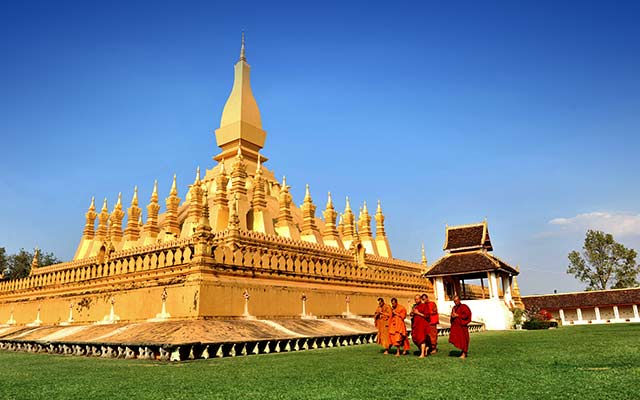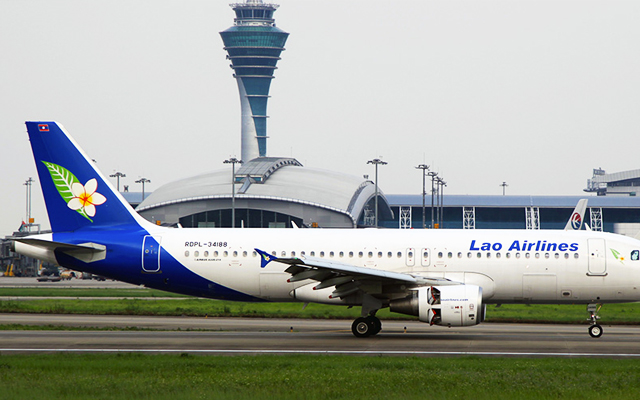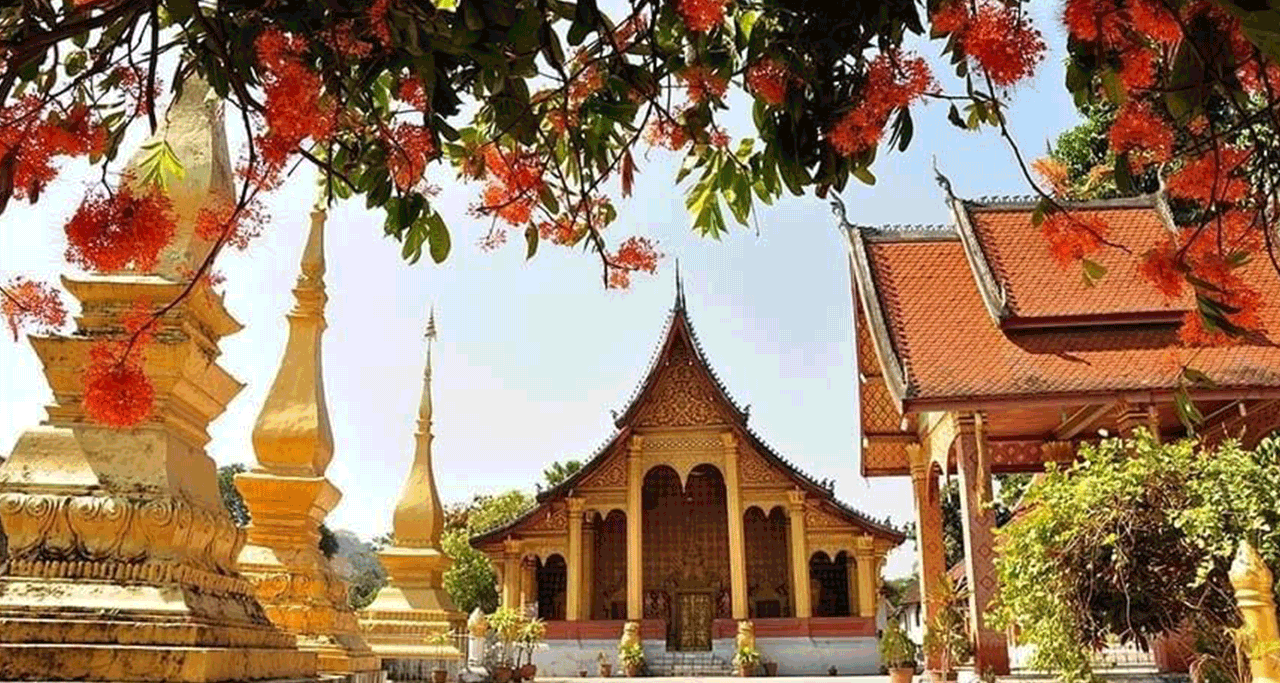Wat Xieng Thong – Temple of Golden City
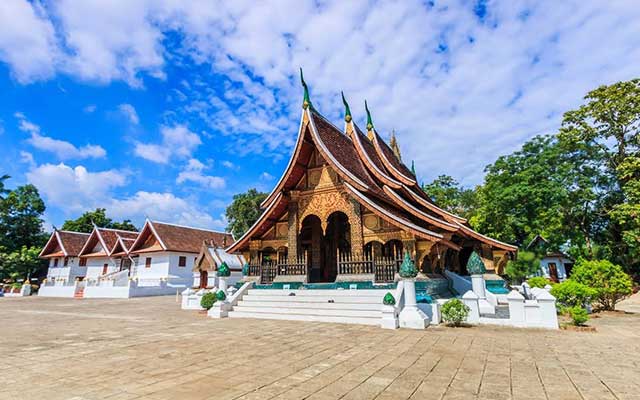
Wat Xieng Thong, Luang Prabang, Laos
Meaning “temple of Golden city”, Wat Xieng Thong is one of the most important temples in Laos. It remains a significant monument to the spirit of religion, royalty and traditional style of a fascinating city.
History
Wat Xieng Thong was built in the 16th century (between 1559 and 1560) by King Setthathirath who ruled the country from 1548 to 1571. He built the Wat in order to commemorate the legendary King Chanthaphanith. Wat Xieng Thong was under the patronage of the royal family until 1975, when the Lao People’s Democratic Republic (LPDR) was established. Lao Kings used this site for their coronation of and also the center of numerous annual festivals honoring the Buddha and various folk spirits.
Situated on an embankment above the Mekong River, the Wat often served as the gateway to the town. Visitors from Siam which controlled the country for a long period, would end their journey at Ban Xieng Mene on the right bank and used ferry across to the city from the river entry of the monastery.
Since being built until present, a number of restorations have taken place, especially in the twentieth century with a notable one in which the French participated. In 1928, when the French Governor General visited Luang Prabang, King Sisavangvong successfully demanded French to share the cost of restoration, as Laos was a French protectorate from 1893 to 1953. The remarkable restored works include:
- In the 1950s and 1960s, the funerary carriage house was built.
- In 2012 and 2013, renovations involved carefully cleaning the building, repainting the gold stencils, restoring damaged tiles and doors and windows, and repainting walls.
- In 1880, the Tripitaka library was added
- In 1961, the drum tower was added.
Luckily, this temple was spared by any damage during the sacking of the city in 1887 by the Black Flag Haw. The leader, Deo Van Tri, had studied at the Wat as a monk in his early life. So, he used it as his headquarters during the sacking of Luang Phrabang.
Structure
Wat Xieng Thong is located in a peaceful environment among very old banyan trees, palms, frangipani, scarlet flamboyant and purple bougainvillea. The low sweeping double-tiered roof with the rich interior and exterior decoration of its sim create an exceptionally fine example of the classic Luang Prabang style. The various chapels and other buildings make the entire monastery complex an architectural gem. There are over twenty structures on the grounds. Besides the magnificent sim, several structures deserve special attention.
Sim
A Sim is the central shrine hall in any temple in Laos. Wat Xieng Thong’s Sim is composed of nine cascading roofs and is decorated with a rich grandeur. The roofs are a central element of the structure, sweeping downward in an elaborate array. The center of the roof is decorated by the Dok So Fa, small pagodas covered in gold that hook upwards to the sky. The interior of the Sim is similarly adorned by gold stenciling. A number of gold on black stencils inside present the story of King Chanthaphanith and Jataka stories from Buddhist cosmology.
In the rafters above and to the right of the main entrance, a long wooden aqueduct is set up in the shape of a mythical serpent. During Lao New Year, lustral water is poured into the serpent’s tail and spouted from its mouth to bath a scared Buddha image which is housed in nearby pagoda. A drain in the floor channels the water through pipes under the floor of the sim and the water then pours from the mouth of a mirror-spangled elephant’s head located on the exterior wall.
Covering the exterior of the back wall of the sim is a mosaic which depicts a legendary flame tree. This particular composition is especially beautiful during the Festival of Lights, when the sim is decorated with Khom Fai Dao, star-shaped lanterns constructed of bamboo and mulberry paper. The candlelight illuminates the tree and animals in the mosaic, making them twinkle magically.
Red Chapel
The Red Chapel is house of the Reclining Buddha, one of Laos’s greatest sculptures in bronze. It is one of the most beautiful and important buildings of Wat Xieng Thong. It has a three – layer roof with eighteen naga brackets supporting the lowest roof, and four ornamental finials at the ends of the upper two layers.
The interior of the chapel is decorated with gold stencils on red or black walls. There are numerous small gold Buddhas attached to the walls, representing the miracle at Savatti, The exterior is covered with a red stucco inlaid with brightly colored glass mosaics. The mosaics describe different scenes of traditional village life as well as ethereal religious scenes set higher on the walls.
The reclining Buddha image is about two meters long and fashioned in the classic Lao style, clad in flowing robes. The Buddha is lying on its right side with the right hand supporting the head. It was crafted in 1569 on the order of King Sai Setthathirat. In 1931, the image was taken to France and displayed at the Paris Exhibition. It was kept in Vientiane until 1964, when it was returned to Luang Prabang.
Funerary carriage House
The Carriage House located at the eastern edge of Wat Xieng Thong. It was built to house and preserve the funeral carriage of King Sisavang Vong and members in Royal family. It also contains other religious and ceremonial relics which belonged to the Royal family. The building stands 12 meters high with a double roof in the Xieng Khuang (or Luang Prabang III) style.
The facade and exterior side walls are covered with sculpted and gilded teakwood panels which recount the Lao version of the Ramayana story. The right tympanum is stunning in its depiction of the combat between the vulture king and Ravana, the kidnapper of Sita. Carved wooden shutters on the northwest side of the building include depictions of Monkey King Hanuman as well as devas and devis.
Entrance fee & Opening hours
The temple allows everyone to visit daily from 8AM to 5PM.
Entrance fees: 20,000 kip per person (2.5 USD).
How to get there
Wat Xiengthong is located on the main street at the end of the peninsular. In Luang Prabang, there is no bus, hence you can reach the pagoda by foot or a tuk-tuk. A tuk – tuk will cost about 15,000 – 20,000 kip depending your hotel’s location.
Do’s and Don’ts
– Cover yourself from shoulders to knees, take off hats and shoes.
– Respect the monks and novices. Women are not allowed to touch them.
– Do not show affection publicly.
– Refuse any antiques.

